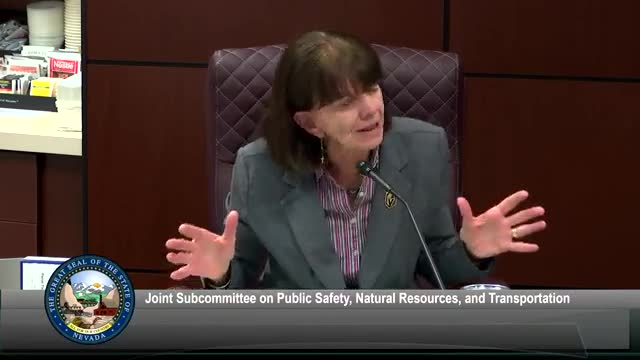
This article was created by AI using a video recording of the meeting. It summarizes the key points discussed, but for full details and context, please refer to the video of the full meeting. Link to Full Meeting
Alan Janae, a representative from the Nevada Department of Wildlife, addressed the committee, emphasizing that Nevada is home to over 50% of the nation’s wild horse and burro population. This staggering number has raised alarms among environmentalists and wildlife managers alike, as the overpopulation of these animals is estimated to be 340% above designated levels on federal lands. The hoof shearing action of wild horses is particularly damaging to vital watering holes, compacting soil and threatening the availability of water for other wildlife.
Janae explained that the department collaborates with the Bureau of Land Management (BLM), livestock permittees, and private landowners to implement fencing around critical water sources. This strategy aims to protect these areas from the destructive effects of wild horses while still allowing for water access for livestock. However, the management of wild horse populations remains a federally controlled issue under the Wild Horse and Burro Act of 1971, complicating local efforts to address the problem.
The conversation also touched on the financial challenges faced by the BLM in managing wild horse populations. Janae pointed out that a significant portion of the BLM's budget—75 to 80%—is consumed by the costs associated with feeding off-range populations. This leaves little funding available for essential management strategies such as fertility control or population gathers, which are crucial for restoring balance to Nevada's ecosystems.
As the meeting concluded, it was evident that the wild horse issue is not just a matter of preserving a symbol of the American West; it is a pressing environmental concern that requires immediate attention and action. The committee's discussions underscored the need for a collaborative approach between state and federal agencies to find sustainable solutions that protect both wild horses and the delicate ecosystems they inhabit.
Converted from 3/20/2025 - Assembly and Senate Subcommittee on Public Safety, Natural Resources, and Transportation meeting on March 20, 2025
Link to Full Meeting
Comments
View full meeting
This article is based on a recent meeting—watch the full video and explore the complete transcript for deeper insights into the discussion.
View full meeting